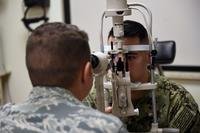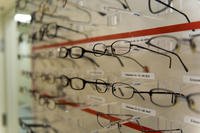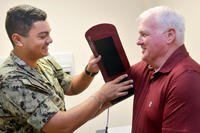 By General George W. Casey, Jr.
By General George W. Casey, Jr.
The first time I saw the Vietnam Veterans Memorial, it took my breath away as I struggled with the scope of the loss that it represented for our family and for our Country.
My father’s name is on The Wall, on the 126th line of panel 9-W. He was commanding the 1st Cavalry Division when his UH-1 “Huey” helicopter crashed near Bao Loc on a mission to the hospital at Cam Ranh Bay to thank servicemen under his command that were injured during the Division's successful operations into Cambodia.
For me, and for the family members and friends of the 58,282 men and women whose names appear on The Wall each visit is an especially profound experience. But the Memorial isn’t for us alone. It’s been a place of remembrance and healing for all Americans.
Nearly half of all Americans today were born after the fall of Saigon in 1975. For them it is difficult to appreciate the divisions the war created in this country.
Far from being honored like today's veterans, the men and women of our Armed Forces were reviled in some quarters. There weren’t any welcoming parades for the thousands of returning American servicemen and women who did their duty in Vietnam. Their sacrifices, and those of their families, were neither recognized nor widely appreciated.
The Wall changed that. Maya Lin’s simple and dramatic design, the ever-present veterans who stand by just to talk, and the lifelike bronze statutes have all helped to forever transform the way Americans view those who served in Southeast Asia.
The veterans who’ve served ever since have been the beneficiaries of that change. Every time the words “Thank you for your service!” are uttered, their origins are found at The Wall.
Now, three decades after The Wall was dedicated, the Vietnam Veterans Memorial Fund, the same volunteers who conceived it and raised the money for it, plan to break ground later this year for an Education Center on an adjacent plot of land.
The Education Center will complement the emotional power of The Wall with a state-of-the-art interactive learning experience honoring not just those who served in Vietnam but all American veterans.
Besides a long-overdue exhibit of the many personal remembrances that have been left at The Wall by friends and family members, a multi-media “Wall of Heroes” will memorialize and personalize the 58,282 men and women who made the ultimate sacrifice in Vietnam.
Like The Wall itself, the Education Center is wholly a grassroots initiative – conceived and organized by veterans to honor the memories of their fallen brothers and sisters.
Construction of this important tribute to America’s veterans depends on the generosity of each of us. While survivors like me have a special responsibility, every American citizen owes a great deal to those who’ve served.
When a war is forgotten, so too, unfortunately, are the sacrifices of those who fought it; and no nation can afford to forget the sacrifices of the brave men and women of their Armed Forces--and the families who support them--who fight to preserve the freedoms that it holds dear.
This Fathers’ Day, please, join me, Sons and Daughters In Touch, and the countless others who lost a loved one in Vietnam by supporting the Education Center at The Wall, so that we can learn from our past – and so that future generations will never forget.
You can donate by visiting www.BuildTheCenter.Org or www.sdit.org.
####
General George W. Casey, Jr. is a retired United States Army General who last served as the 36th Chief of Staff of the United States Army from April 10, 2007 to April 11, 2011 and as Commanding General, Multi-National Force – Iraq from June 2004 to February 2007.
Sons and Daughters In Touch is a non-profit organization that provides support to the family members of those who died or remain missing from the Vietnam War. This Fathers’ Day they will renew their commitment to raise at least $1.00 from every surviving family member of the men and women whose names are on the Wall to support the construction of the Education Center at The Wall.



